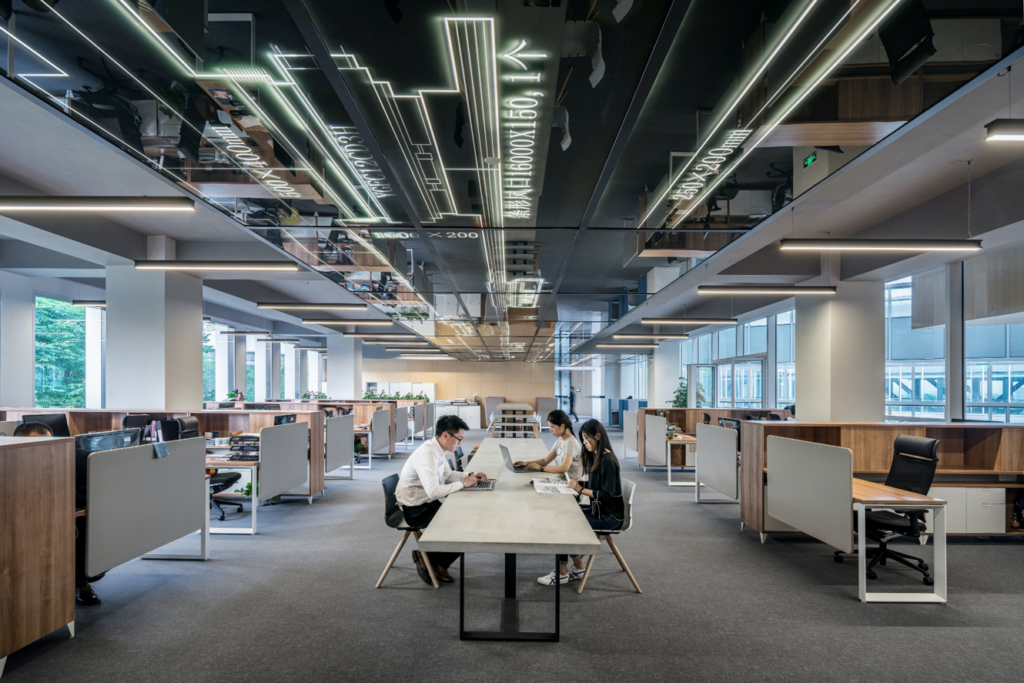Accessible Workplace Hangs In The Balance! I just had to share… Trish:-)
This is Working Together, a weekly series on the changing face of U.S. business. To mark the 30th anniversary of the Americans with Disabilities Act, we’re taking a deep dive into how the pandemic is changing how employers think about accessibility.
After graduating summa cum laude from Adelphi University in 2013, Emily Ladau began to apply for teaching assistant positions in Smithtown, New York. In a pre-interview over the phone, the now 29-year-old writer disclosed that she required a wheelchair to get around.
“That pretty much shut down the conversation right away,” she said. “People have a lot of anxiety around disclosing their disabilities — whether it is physical or hidden — because of the reaction they get from employers.”
As companies start to reopen hiring, many job seekers with disabilities will face the same challenge Ladau did seven years ago, now with the added burden of a global pandemic.
Nearly 40% of people globally with disabilities were laid off or furloughed as a result of pandemic, according to some estimates. And with only 19% of U.S. adults with disabilities holding jobs last year — compared with 66% of those without disabilities — the hiring bias against disabled workers may only grow worse in the wake of this crisis.
“Clearly, there is pervasive discrimination of people with disabilities in employment,” said Peter Berns, CEO of The Arc, the largest national community-based organization advocating for people with intellectual and developmental disabilities. “If not, you’d have a lot more people employed. It is really that simple.”
The bias against disabled workers is a well-documented pre-pandemic problem. Also well established: Accessible workplace policies are good for business. Companies that excel at Disability Employment and inclusion are four times more likely to deliver higher shareholder returns than their competitors, according to a study by Accenture. Now that we are being forced to reimagine the working world because of COVID-19, companies have an opportunity to completely rethink how and where work is done. Such change could benefit disabled employees.
Done well, a workplace revamp could open doors for millions of disabled workers. If done poorly, though, even more disabled workers may face exclusion, several experts said.
“Everybody needs to think outside their box right now, and that is still where disability sits,” said James Emmett, a corporate disability consultant who has worked with companies like Walgreens, Best Buy and Office Depot. “Some day, we are going to sit inside the box, but since many employers have fear and stigma around disability, we sit outside the box.”

Disabled workers have been calling for remote work benefits for quite some time. Now that the practice has become widespread since the pandemic, Emmett said he is seeing employers change how they staff certain positions.
Advanced Auto, a Raleigh North Carolina-based automotive parts company, previously had all of their call center representatives in one facility, working highly structured, similar shifts. In the COVID-19 economy, the company has representatives working remotely and in staggering shifts, opening opportunities for workers with disabilities and those who need more flexible schedules.
“I don’t want to say there is a silver lining in the current crisis, but the growing openness of businesses to allow remote work options … could open up some more opportunities for folks with certain types of disabilities,” said Arc’s Berns.
There are also signs that companies are starting to pay increased attention to the needs of disabled workers. In mid-July, global non-profit Disability:IN held its annual conference virtually and saw unprecedented attendance, said president and CEO Jill Houghton. With executives from LinkedIn-owned Microsoft, Accenture and World Financial, the event had 3,000 participants, a 1,000-person increase from the previous year.
Disability:IN has also developed a Disability Equality Index, a benchmarking tool for the Fortune 1,000 to gauge their level of disability workplace inclusion against competitors. In 2020, 247 companies participated in the index, up from 189 in 2019. And the number of top-scoring companies more than quadrupled to 205, compared to 43 in 2015.
For Houghton, corporate America’s growing focus on accessibility is, in part, a reflection of how the pandemic has changed the way we think about work. “It goes back to leading with humanity,” she said. “This has been a time when we have got to know our employees in a way that we never would have before. I really believe that it has caused us to learn more about accessibility.”
While the sentiment across the inclusion community is that employers are increasing their commitment to accessibility, some are concerned the good will wane as the pandemic wears on. With many companies fixated on surviving the post-pandemic economy, accessibility issues may be treated as secondary.

As employers start to bring back furloughed or laid off workers in waves, the risk of discriminating against those disabilities is particularly high, said Thomas P. Golden, executive director of Cornell University’s Yang Tan Institute on Employment and Disability. Golden was recently on the phone with an employment disability provider who shared that a large retailer was only bringing back workers who are able to work a full schedule and perform a set of different tasks. Such criteria may exclude workers who need special accommodations.
“With rehiring, employers really have to think through whether … that is going to discriminate against a subpopulation of people,” said Golden.
It’s unclear how the pandemic will ultimately affect disabled workers, but leaders agree on one thing: There is still a long way to go on these issues. Much of this will depend on how business leaders act right now, said Ladau, who is now the editor in chief of Rooted in Rights, a blog focused on disability rights issues.
“You can legislate access, but you can’t legislate attitudes,” said Ladau. “You can technically implement all the changes you want, but there are people holding on to old attitudes and that’s what makes it challenging.”
This report by Businesswire was first published Jul 29, 2020.
Source: LinkedIn
If you want to know more about disability inclusion in your company, read the Why & How’s here.

